This week we visit the Historic city of Edinburgh to put Scottish science under the microscope! We discover the incredible magnetic bacteria and find out how their bio-nano-magnets could help treat cancer. We find out how satellite images can help predict outbreaks of cholera, and talk about the twist in the tale of TB - drug resistant Tuberculosis has now been found in the UK, so what is this disease and how can we hope to treat it? Also, how scientists have used cloned stem cells to treat Parkinson's disease in mice, how a whiff of anaesthetic could sooth traumatic memories and why bonobo apes play it safe while chimps like to gamble. Plus, in Kitchen Science we find out how yeast makes fluffy bread and fizzy beer!
In this episode
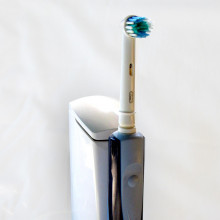
- How fast does my toothbrush vibrate?
How fast does my toothbrush vibrate?
Ben: I’m not really sure I know this is the best way to measure it. If anybody knows get in touch: Chris what do you think?
Chris: I think you may be on to something. When I was driving around in Australia last year a group of school children tried to measure vitamin C in foodstuffs as their school science project. They took an off-the-shelf substance, food or drink cordial which is a well known, very powerful brand, full of vitamin C. So they thought, "we’ll use that as the control because we know that will have lots of vitamin C and if we can detect that we know our experiment’s working."
They kept getting a negative result. It turned out that the company were lying and saying it was full of vitamin C and there was none in it. They had to pay a very big fine and change all their labelling.
It could be that with this sonic toothbrush there’s a little bit of adventurous advertising going on. I think if anyone else has a sonic toothbrush and they would like to record it, analyse the waveform. If in fact you’ve done this, please do experiment and then tell us how many cycles a second is it producing? Is there some misleading advertising going on?
Ben: It would be fascinating to find out and we’re really pleased, Mark, that you’re getting into Kitchen Science in this way.
So what do you think? Is this a good way to find out how fast a sonic toothbrush vibrates?
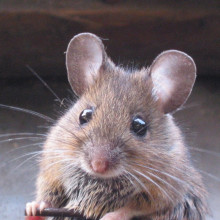
02:23 - Cloned tissue cure Parkinson's Mice
Cloned tissue cure Parkinson's Mice
Scientists have used cloning technology to cure mice with the symptoms of Parkinson's Disease, using their own cells.
 Writing in Nature Medicine, Sloan-Kettering Institute researcher Viviane Tabar and her colleagues collected skin cells from the tails of mice with an experimental form of Parkinson's. They then "cloned" the mice by injecting the DNA from the tail cells into mouse eggs that had previously been emptied of their own DNA.
Writing in Nature Medicine, Sloan-Kettering Institute researcher Viviane Tabar and her colleagues collected skin cells from the tails of mice with an experimental form of Parkinson's. They then "cloned" the mice by injecting the DNA from the tail cells into mouse eggs that had previously been emptied of their own DNA.
When the mouse embryonic clones began to develop the resulting embryonic stem cells were then harvested and cultured in a dish with a cocktail of growth factors to trigger them to turn into nerve cells that produce the transmitter chemical dopamine, which is missing from the brains of Parkinson's patients. 100,000 of these cells ere then injected back into the brains of the affected mice. One group of animals got their own genetically compatible cells, whilst a second group of animals were injected with cells derived using DNA from an unrelated mouse. The aim was to test whether using genetically compatible tissue would affect the success rate of the treatment.
Mice that received brain cells made using their own DNA showed significant improvements in their disease symptoms, and analysing their brains subsequently revealed that, on average, 20,000 of the injected nerve cells had survived and wired themselves into the brain.
The animals that received incompatible grafts, however, showed little improvement, and only about 200 surviving cells were visible in their brains later. This result shows for the first time that it's possible to tailor-make genetically-compatible tissue to repair the diseased brain, and that self-derived cells generated like this are likely to be far better received by the body than tissue from elsewhere.
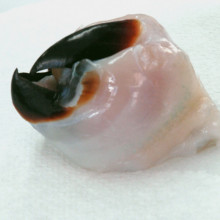
05:50 - Sharp Beaks Stick to Soft Squid
Sharp Beaks Stick to Soft Squid
Could you carve a roast dinner using a knife that had no handle?
This is almost what a squid has to do every time it uses its beak. Scientists at the University of California at Santa Barbara have discovered how a squid's sharp, hard beak attaches to its soft, squidgy body, leading the way for new materials which can perform more than one task.
Squid beaks are very strong; in fact it's one of the hardest and stiffest wholly organic materials known. But it's never been fully understood how this stiff, hard material can attach to the soft material that makes up most of the squid's body. In order to bite down on prey, the beak will exert huge forces on to the soft skin, and - like carving a roast using a knife with no handle - should do almost as much damage to the squid as it does to its prey.
Writing in Science, Ali Miserez and colleagues spotted a clue in the colour of the beak - it fades from black at the tip to almost transparent near where it attaches to the body. They took slices through the beak of the Humboldt Squid, Dosidicus gigas to look at how things change as you go along this colour gradient. By using different chemicals to remove either the proteins or pigments, they noticed a distinct gradient in the amount of water, chitin (which is a bit like the protein Keratin - which makes up horns and fingernails) and proteins which include a substance called Dopa - as you go along the beak.
So the very tip, the sharpest, stiffest bit of the beak, called the rostrum, there is far more dopa-containing protein - and these are able to form cross bonds to make the rostrum much tougher. As you move away from the tip, the amount of protein decreases, but the amount of both chitin and water greatly increases.
This is a great example of nature joining together two mis-matched materials, so we can learn from nature's example and use these techniques to attach biologically active components to materials. So we can develop better anti-fowling coatings for boats, but also new and better ways to test how biological systems will react to chemicals. In fact, knowing how dopa polymerizes has already helped to develop mussel-inspired glue, and should allow us to attach multi-functional coatings on to almost any surface.
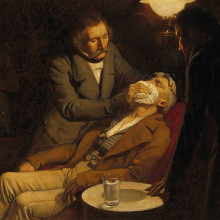
08:54 - Bad memories lost to the ether
Bad memories lost to the ether
A whiff of anaesthetic might be able to wipe away bad memories and even prevent post-traumatic stress disorder...
Writing in PNAS, UC Irvine scientists Larry Cahill and Michael Alkire describe how they gave volunteers either small amounts of the inhalational anaesthetic sivoflurane, at a dose one-tenth of that needed to induce unconsciousness, or a placebo. The subjects were then asked to look at a batch of 36 photographs. Some of the images were of a harrowing nature, showing severed limbs for instance, whilst others were relatively humdrum, such as a cup of coffee.
A week later the volunteers were asked to recall as many of the images as they could. Placebo-treated individuals remembered 29% of the harrowing images and 12% of the more boring ones, but the sivoflurane group recalled just 5% of the harrowing pictures and 10% of the boring ones. Brain scans show that sivoflurane can interfere with communication between the amygdala - the part of the brain concerned with emotion and fear - and the hippocampus, where new memories are laid down, thus explaining why the anaesthetic-treated group recalled far fewer of the emotionally-harrowing images than volunteers given the placebo.
The team suggest that understanding how blocking this pathway affects memory formation could also be used to treat people at risk of developing post-traumatic stress disorder, a condition in which patients experience vivid and emotionally-charged flashbacks of frightening or stressful situations.
For people who already have the condition though the problem might be more difficult to solve, although New York University researcher Joseph LeDoux has found that rats that have learned to associate a sound with receiving an electric shock can be pursuaded to forget the association if they are played the sound whilst under the influence of a drug that can affect memory. This suggests that, in the same way, perhaps PTSD patients could be prompted to re-live their ordeals whilst under the influence of a low dose of an anaesthetic to help them to forget their unpleasant experience.
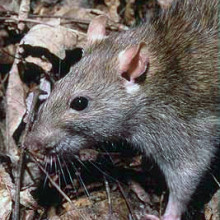
12:03 - Rule Learning Rats
Rule Learning Rats
Rats are even smarter than we thought: they can learn a set of abstract rules and apply them to completely new situations - something we thought previously only humans, other primates and one or two species of bird can do.
When a toddler learns to speak and understand language, they don't have to learn the meaning of every possible word combination. Instead, they learn the 'rules' of the language, and apply these rules to new words as they learn them. Now, I'm not suggesting that Rats learn to speak, but they do seem to be capable of the same kind of rule transfer.
Writing in Science, University College London 's Robin Murphy and colleagues conditioned rats to expect food after being played a certain sequence of tones - this is called Pavlovian conditioning and the rats responded as you would expect, looking for food after the right sequence. They were fed after hearing the sequence ABA, and BAB, but not after the sequence AAB, BBA, BAA or ABB.
They were then tested again using different tones -if they responded to the right sequence, regardless of what tones they were, they would have transferred the sequence rule to a new set of conditions. It's been shown that songbirds do not recognize a song that has been transposed by an octave, so different tones should be treated as a completely new situation.
They were played sequences of CDC, DCD, CCD, DCC, DDC and CDD - and the researchers again measured how long the rats spent looking for food after each sequence. The rats spent much more time looking for food after the sequences they had learned with different tones - in this case CDC or DCD. This shows that rats are able to apply abstract rules to a novel situation, a key element of problem solving.
So both rats and humans have evolved a mechanism to transfer abstract rules to new situations, a key skill for the development of language which seems to set us so far apart from the rest of the animal kingdom. This ability makes up part of the neurological 'toolkit' we have for solving problems, probably part of why both rats and humans are successful almost everywhere on Earth.

14:33 - Great Ape Gambles
Great Ape Gambles
with Sarah Heilbronner
Chris - Sarah Heilbronner is a researcher at Duke University in the US and she been giving chimps and bonobos (an animal related to chimps) a choice between taking a safe bet and being more adventurous. Hello Sarah.
Sarah - Hello
Chris - What did you do in your experiments? What did you find?
 Sarah - We were interested in the execution of decision making strategies and particularly the strategies about risk. As you said we looked to our closest evolutionary relatives, chimpanzees and bonobos, for help. The task that we used has a very intuitive human analogue and so I'll describe that first. If I put you on a gameshow and gave you a choice between what's behind door number 1 and what's behind door number 2 and said that you could keep whatever was behind the door you chose. I'd also told you that behind door number one there was definitely $40 or £40..
Sarah - We were interested in the execution of decision making strategies and particularly the strategies about risk. As you said we looked to our closest evolutionary relatives, chimpanzees and bonobos, for help. The task that we used has a very intuitive human analogue and so I'll describe that first. If I put you on a gameshow and gave you a choice between what's behind door number 1 and what's behind door number 2 and said that you could keep whatever was behind the door you chose. I'd also told you that behind door number one there was definitely $40 or £40..
Chris - It's a bit of a low-budget gameshow then?
Sarah - Well, I never said it was going to be a very exciting gameshow but you've got on it for free so it should be ok.
Chris - And door number 2?
Sarah - Door number 2, there's a 50% chance that you'll get $10 and there's a fifty percent chance that you'll get $70. The expected value of door number 2 is the same as the expected value of door number one. As you suggested in your introduction, because you're a human you're gonna prefer door number 1. You're going to prefer the safe bet to the gamble.
Chris - Do we know why people tend to be safe betters? Why aren't we more adventurous in our betting?
Sarah - This was exactly the type of question we were interested in asking. Instead of asking it about humans we asked it about chimpanzees and bonobos of the great apes. But of course chimpanzees don't regularly work with money nor do they open doors. Instead they were choosing between what's underneath bowl number 1 and what's underneath bowl number 2. We used grapes instead of money. Bowl 1 always covered four grapes. Bowl 2 50% of the time covered one grape and 50% of the time covered 7 grapes. What we found was pretty surprising. The chimpanzees who are our closest relative actually preferred to gamble. They didn't show the same type of preferences as humans. The bonobos were actually very much like humans and they wanted the safe bet as opposed to the gamble.
Chris - So the chimpanzees were always being very adventurous. They were taking the high adrenaline option and gambling even though sometimes they got less fruit even if they picked the bowl they knew had just four pieces of fruit under it?
Sarah - Exactly. Now over time, chimpanzees and bonobos got the same amount of fruit because they were doing this over and over again. They both had these strong but opposite preferences.
Chris - Have you any clue as to why, Sarah? Do you know why they were behaving like that?
Sarah - The big question is why. We went back and did some investigation into what they eat in the wild. We were studying captive chimpanzees and bonobos in the zoo but if these chimpanzees and bonobos had been in the wild the chimpanzees would have been taking much more uncertain, much riskier food sources than bonobos. I'll give you a couple of examples. One is that both of them feed on fruit trees but the fruit trees that bonobos are feeding on are much more consistent in their environment and they tend to be larger. They're a much less risky option. An easier one to understand maybe is that chimpanzees are sort of unique in that they hunt colobus monkeys. They go out in big groups and they search for colobus monkeys and they invest a lot of time and energy into doing this. If they manage to bring a colobus monkey down they get a lot of calories. It's a high payoff but high loss possibility there.
Chris - What you're saying is that because they have a high-risk lifestyle then evolutionarily speaking they've grown up to gamble which is why they do it even when you put them in an experiment.
 Sarah - This is exactly right so even when they're in an experimental situation and all the conditions are the same they're still going to maintain the types of preferences that they had back in their evolutionary situation.
Sarah - This is exactly right so even when they're in an experimental situation and all the conditions are the same they're still going to maintain the types of preferences that they had back in their evolutionary situation.
Chris - So coming back to us, humans for a second, what are the implications for the fact that we are gambling on the stock exchange, we go to the betting, we bet on the Boat Race (Cambridge lost, unfortunately-that's bad news for us). Are we applying the kind of logic that would have guaranteed in our ancestry that we would have filled up the fridge to a modern economy and there's therefore a flaw in how we process our decisions?
Sarah - It's a hugely interesting question because much of behavioural economics over the past few decades has shown that humans are not rational actors even though we like to think of ourselves as extremely rational beings. Especially when we're making big decisions about money but these types of results do suggest that actually we are making decisions, at least partially, based on what we faced during our evolutionary history and the most important thing then was not money. Money is a relatively recent invention. The most important thing was food so I think these results suggest even for us, humans, a rational actor (Homo economicus). Even for us, we're probably making decisions based on strategies that were used in our evolutionary path to get food and we might not even be aware of that.
Chris - Thank you very much for explaining that to us, Sarah. Basically, put simply, next time you choose a safe bet over a risk you're probably behaving more like a bonobo than a chimp.
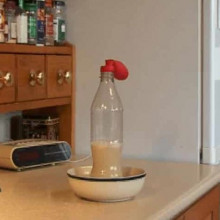
22:20 - Fizzy Yeast
Fizzy Yeast
Find out what makes bread rise and champagne fizzy in this simple kitchen science.
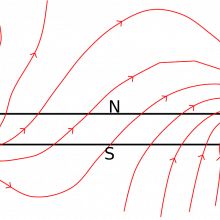
26:35 - Magnets from Microbes
Magnets from Microbes
with Dr Sarah Staniland, Edinburgh University
Ben - We're joined by Dr Sarah Staniland from Edinburgh University. Tell us about these bacteria.
Sarah - Hello Ben. What they are basically is tiny little microbes about 2 or 3 micrometres long and they were discovered quite recently, mainly in the 70s by someone called Richard Blakemore. He basically discovered them by looking at environmental samples under the microscope and saw that some bacteria were moving towards the magnet.
Chris - It's not an obvious experiment to do though, is it Sarah, to put bacteria near a magnet? So that's an amazing intuitive leap.
Sarah - Yeah, yeah. It was. It was a very intuitive thing for him to do.
Chris - So when you put a magnet near these cultures of bacteria some of the bacteria or all of the bacteria grow towards the magnet.
Sarah - yes. All of the ones with magnets in will move towards the magnet.
Chris - When you look inside those cells what's the actual form of the magnet? What shapes does it take?
Sarah - What you see, the ones I work with come in all different shapes and sizes so as I say they're normally one or two microns. Some are round shaped, some are more rod shaped. The ones I work with are like mini worms, like spirals or a corkscrew. What you have down the central axis of the cell is what looks like a spine. So you get tiny little electro nanomagnets, you get tiny little rows in a chain: a string of pearls if you like.
Chris - What are they made of? What are these nanomagnets?
Sarah - They're made of either Iron oxides which are magnetised or the sulphur version of that where the sulphur has just replaced the oxygen - something called greigite.
Chris - So it's very similar to what we think's going on in bats. They use the Earth's magnetic field to navigate around. I think they've now found deposits of this same material in brain cells in things like bats and also fish like salmon that navigate in the same way.
Sarah - In pigeons and people as well!
Chris - So what do we think they're doing?
Sarah - Well, there's a lot of conjecture on why they have these magnets. A lot of ideas come from the fact that the ones found in the northern hemisphere seem to be north-seeking. If you think of the globe being round and you follow the direction you'd go in if you go north from the equator it actually draws them downwards slightly. In aligning with the magnetic field people have proposed that they're using it to grow down. They only grow in microaerobic conditions which is actually a little bit lower in the sediment. They're actually using it to find their ideal growth.
Chris - How would they have evolved behaviour like that? How would they have got there in the first place? It's pretty ingenious.
Sarah - I'm not sure of the evolutionary system of how they got them but I think sometimes they spontaneously use their magnetism so it could just be a spontaneous thing.
Chris - If you take north-seeking bacteria to the south pole, do they die?
Sarah - No, as I say when you grow them in the lab you can put a strong magnet to them and basically they just use it to orientate. As long as you keep in a microaerobic condition they'll grow wherever.
Chris - Do we understand the machinery that they use to make these magnets? I guess that's what you're trying to flush out, isn't it?
Sarah - These have only been discovered lately in the late 70s but a lot of the research activity's been based on trying to work out how they do it. Specifically, to find out how minarisation (the process we call this) occurs. This has a lot of implications for humans because we minarise bones. This has implications in medicine for medical reasons but humans are very big, complex bodies whereas microbes are much more simple so a good model system to start with to look at the minarisation process.
Chris - Presumably, these bacteria have some kind of genetic pathway that enables them to make these magnets. How do they end up with the magnets actually lining up with all their north and south poles in a line rather than just jumbled up? If I get some magnetic things and just chuck them in a bag they just form a random jostle of particles, they don't form a nice straight chain.
Sarah - That's a good question and what people have found is that they have things called vesicles which is like a little sac that's attached to the edge of the membrane inside of the bacteria. They're already formed in a row but they're held in a row by the protein - a long actin-like protein that they've just recently discovered. If you like, that's the string to the chain of pearls.
Chris - How do you think if we were to borrow from biology, if we were to nick this from the bacteria that have invented it how do you think we could use it?
Sarah - That's what we're looking at: how to use it because biology's really good at making perfectly-formed things. If you think about it, in our ears we have bones that are extremely delicate and very well-defined. You couldn't get away with having that bone in a crazy random shape. There's not much room for error. The really nice thing about biology is the precision. We're thinking of using these particles in lots of technological applications. When you think about it we use nanomagnets in many applications like recording media, information storage. As you mentioned as well there's lots of medical applications for nanomagnets. The problem is, when you synthesise these at room temperature in a lab then you get a variety of shapes and sizes. You have to size-select. These bacterial obviously just make them a very much superior defined size and shape.
Chris - So you just have to do it the way the bacteria do it, presumably?
Sarah - Or just get the bacteria to do it for us.
Chris - What about in terms of exploiting this for human health and disease? Are there any things that you could use this for? I'm thinking it would be really quite neat if you could have some system where you tether a drug onto a miniature magnet and then perhaps concentrate the drug in say, a tumour, by using a massive magnet where the tumour is. All the drug molecule went just there and then you wouldn't have any side effects around the rest of the body.
Sarah - Well, that's exactly what people are doing. The particular reason why these bacteria magnets are good is that they are surrounded by a liquid membrane. Because they're made by a biological body they've got this fatty coating and that's especially good for these sorts of technologies that you've just talked about. Because they have this coating then you can genetically engineer the bacteria to have an anchor site, if you like. That anchor site you can tether the drug to. Whereas if it's just an inorganic magnet then you can't actually tether a drug that easily to it. It's because it has this coating that makes it ideal for this purpose.
People are looking into drug delivery but also things like other cancer treatments where you can use a magnet to take the particle to the side of the tumour and then use an alternating field to warm up the particle. That can either release the drug or burn the cancer itself.
Chris - Is that coating also the way in which the bacteria detect what north and south is? It's all very well having a miniature magnet floating around your cell but how you actually tell the cell what direction your magnet's pointing in must be crucial to sensing the north and south. Is that how they do it, they have some kind of coating that detects the orientation of the particle?
Sarah - No, the particle is a very rounded shape so no the coating doesn't do anything to that. The coating's just the sac that it's grown in and it remains on it once it's grown.
Chris - How does the bacteria tell north and south from the orientation of the thing? Is it physically that the force of the magnetic field twists the bacterium because it is so light?
Sarah - That's right. It's not like they have a choice even when they're lying, when they're dying. When you look at them under the microscope you can just switch a magnet from left to right and they'll just rock back and forth. They don't really have a choice in the matter.
Chris - Attractive, even in death. Thank you very much. That's Sarah Staniland, she's a researcher at Edinburgh University.
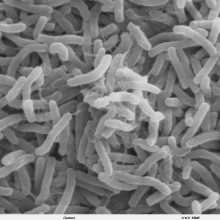
33:57 - Predicting Cholera Outbreaks from Space
Predicting Cholera Outbreaks from Space
with Rita Colwell, University of Maryland, and John Hopkins University
And now to a disease that kills thousands of people every year - most of them in the developing world - and that's the bacterial infection cholera, which causes life-threatening diarrhoea. Most people pick it up by drinking contaminated water, because the cholera bacterium normally lives in the intestines of marine creatures like plankton. So increases in plankton numbers due to global warming and rising sea temperatures could cause the number of cases of cholera to surge. But watching the plankton also means that scientists now have a way to spot where outbreaks might be about to happen - and they're using satellites to do it...
Meera - We’ve all heard about climate change in the news: increasing temperatures, melting glaciers and rising sea levels. But one factor we don’t hear about is the effect climate change can have on human health and pandemics. A bacterial disease now thought to be exacerbated by climate change is cholera, caused by the bacterium Vibrio cholerae. One scientist that’s been researching this is Rita Colwell from the University of Maryland and John Hopkins University.
Rita - Cholera is caused by a bacterium that is found naturally in the environment of estuaries, coastal waters, lakes, rivers and even offshore areas. It’s associated with plankton. Much like we have in our gut bacteria help us digest food, so do these zooplankton have in their gut and on the surface of their structures. The Vibrio that unfortunately also causes cholera in humans when ingested.
Meera - Initially cholera only affected the Indian subcontinent but through land and sea trading it spread worldwide. The main prevention is by filtering and chlorinating water supplies. This has largely removed the problem in developed countries.
Rita - The areas that are affected mostly are the developing countries: India, Bangladesh, Malaysia, countries in the Middle East and Far East and countries where sanitation, safe drinking water are not available to all. That is the biggest problem, safe drinking water.
Meera - So we now how and where cholera occurs but how is it possible to look into the future and predict when an outbreak is coming?
Rita - The capacity to predict when outbreaks will occur has been made possible by the relationship between the bacterium, the zooplankton species the Copepod and the phytoplankton that bloom first followed by the zooplankton. The phytoplankton can be measured using chlorophyll measurements using sensors in satellites so that allows us to have a global predictive capacity for cholera. That allows us to have a head start in knowing when the epidemic will occur. That allows us to develop what I call pre-emptive medicine. That is to be able to go in with the sufficient vaccine as needed with warnings: public health measures that can be taken. That allows us then to pre-emptively prevent. That’s very important.
Meera - It is great to be able to predict and prevent an outbreak but how far ahead can we realistically predict?
Rita - At the present time the factors that we have bee studying, particularly early observations of chlorophyll concentrations that predict subsequent zooplankton blooms, certainly between 2-3 months would allow us a head-start in predicting an outbreak.
Meera - In its severity cholera can be fatal but up to 80% of cases can be treated. The important thing to note about this disease is that it is preventable if known about, mainly through clean water supplies and sanitation. This isn’t always possible in the developing world so the ability to predict an outbreak and therefore raise community awareness and provide health education in advance could greatly reduce the number of people infected with the disease.
Ben - So first the marine plants bloom, which scientists can see from space, and this is followed by a surge in the growth of the plankton which carry cholera, which can then lead to an outbreak of the disease. So by watching what the plankton are doing you can predict where the disease will strike next. That was Meera Senthilingam talking with cholera researcher Rita Colwell.
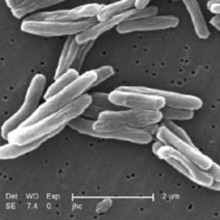
38:52 - The Twist in the Tale of Tuberculosis
The Twist in the Tale of Tuberculosis
with Dr Clifford Leen, Western General Hospital.
Chris - TB has been virtually eradicated from the UK and a whole generation have had hardly any contact from it so it's easy for us to forget what a disparaging and serious problem it was for us in the past. A serious killer disease, but now we're seeing something of a resurgence and not just a resurgence of any old TB but forms of the bacterium which are drug resistant. Dr Clifford Leen is a physician of infectious diseases at the Western General Hospital.
Clifford - Hello Chris.
Chris - So tell us about TB. What actually is TB, for a start?
 Clifford - TB is a disease caused by infection of a bacterium. Mycobacterium tuberculosis. Basically, you get exposed to the germ and there's a timed delay before your symptoms would appear. There's a latent period of some sort. It can affect the lungs primarily but it can also affect other parts of the body like the brain, the kidneys and the gut and also the bone and joints.
Clifford - TB is a disease caused by infection of a bacterium. Mycobacterium tuberculosis. Basically, you get exposed to the germ and there's a timed delay before your symptoms would appear. There's a latent period of some sort. It can affect the lungs primarily but it can also affect other parts of the body like the brain, the kidneys and the gut and also the bone and joints.
Chris - Is it true in the case of TB that coughs and sneezes spread diseases? Is that how it gets around?
Clifford - It certainly does. It is spread by aerosol route and aerosol can float for a bit before people inhale them.
Chris - Someone with TB, active open TB is coughing. You walk in to the cloud of droplets they've just coughed out, breathe them in - then what happens?
Clifford - The person may well be infected. The disease doesn't happen to everyone who inhales this droplet.
Chris - Do you clear the bacterium from your body or does it stay in you?
Clifford - Some patients clear it and others it stays in you and could be dormant for many years then reactivate when the immune system gets a bit weak.
Chris - With age, in other words?
Clifford - With age or with intervention by doctors who give immunosuppression to control certain diseases.
Chris - What about lifestyle? What if someone has a disease that knocks their immune system back a bit? Say, being alcoholic, having heart disease, kidney disease or homelessness, HIV?
Clifford - You're quite right, all these things tend to make you more likely to the disease. I think it's to do with two things. One is exposure, i.e. if you live in a very overcrowded place you're more likely to be in close contact with people who might pass them to you. The other thing is whether or not you're malnourished or you've got a depressed immune system like an alcoholic or if you've got HIV.
Chris - How do we actually treat TB? It's bacterium, presumably it's just antibiotics?
Clifford - You obviously need to make a diagnosis first. You hopefully will be able to grow the germ and usually in the UK we expect to be able to find which antibiotic the bacterium is sensitive to. Usually it's four drugs. The treatment is four drugs for the first two months, followed by another period of four months with two drugs.
Chris - That's a pretty profound regimen. Most bacterial infections, you get antibiotics for five days. Why do we need four drugs for six months?
Clifford - That is a very important question. We have got a lot of bacteria, a big burden of infection and we've got bacteria that multiply rapidly. There's a small group of bacteria that grows very slowly. Therefore you can only kill the bacterium when it's growing and if it's growing very slowly you need a long time to give the antibiotics to the patient in order to eradicate the infection.
Chris - In the last week or so we've heard of Britain's first case. It's actually here in Scotland, in Glasgow, a form of TB which doesn't respond to those four drugs you mentioned. Where's that come from and why are we seeing more of this kind of thing?
Clifford - There are two types of resistance in TB. One is what we call multi-drug resistance and the on case that we mention is an XDR which is extended resistance in TB. The multi-drug resistant TB has been around for a while but this XDR TB which is the very resistant one there are hardly any antibiotics that are used routinely in TB which can be used to try and treat that.
Chris - Where did it come from, what made it appear in the first place?
Clifford - I think resistance happens gradually over time. We know there's resistance to some of the four components of the drugs we use and when people have more resistance because people have, as you say, the treatment's very difficult to take. You have to take it on an empty stomach, you have to take it daily or at least 3-5 times a week depending on what regimen you use and for a long period of time.
Chris - You think poor compliance of people, because the drugs are unpleasant and have this rather difficult regimen, people will drop off the wagon for a while, this means they don't treat the infection properly and then the bugs learn to become resistant? Or you select out resistant bacteria that they're carrying?
Clifford - Yeah, that's true. First of all you need to make sure as resistance emerges that the four drugs you're using are the right drugs. Places where it's less resource-rich like in South Africa there is no sense of testing. If you use the standard treatment you're losing some of the drugs if it's resistant already. Patients don't take the course of treatment completely, there;s recurrence and there's also resistance. If you've got resistance already and then you start getting more resistance when you treat again then you lose all the drugs that you have against the TB.
Chris - Are most of these cases not homegrown? They're imported to this country from other countries?
Clifford - Exactly. We only have one case, the first that came in the UK in Scotland. We have had some MDR TB which is resistant but not as resistant as the last one. They have been all imported from somewhere else.
Chris - What's the long-term prognosis here with TB? The numbers look pretty scary. About a third of the world's population are now carrying it.
Clifford - True but in terms of the most cases of TB treatment is very effective if you can make sure that he patient is taking the therapy regularly. The places where you can't trust patients to keep therapy will get what you call DOTS which stands for directly observed therapy. That's a good way of ensuring that the patient is taking therapy because somebody watches the patient swallow the medication. MDR TB is treatable if we catch it early. XDR TB has a very poor prognosis, unfortunately.

46:02 - Vocal Accent While Singing?
Vocal Accent While Singing?
Dr David Howard, University of York, Voice Production, Department of Electronics:
In answer to the question which relates to accents, what you hear when people sing as opposed to when they speak, I think the answer to this lies in the way people are trained to sing. We learn vowel sounds, particularly in singing, in a way that allows us to project them to a loud audience. That means that the front of the mouth needs to be more open than it is in speech so it's a bit like a megaphone. The vowels take on a different sound in terms of their timbre which is really what accent is. Therefore the vowels are being placed in a position for singing which is not the same as speech.
The other way of thinking about it is that the-certainly the Opera tradition of singing, certainly the Bel Canto tradition of singing come very much from the Italian school of vowels. Singers are encouraged to make their vowels very clean, very Italian-like: "Spagheeetti." When you do that, no matter what language you start in, you will aim towards the vowels that have that clean, slightly Italian sound. Even if it's not Italian they do merge to a sort of fund-vowel quality which rather removes the accent variation which in terms of mouth movement is really very small.
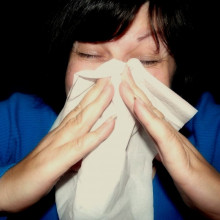
Why is illness worse at the end of the day?
We put this question to Dr Clifford Leen:
Clifford: When you're ill your energy levels are a bit lower than usual. In the morning you're fresh and if you use all the energy before the evening then you'll feel tired. If you pace yourself and do work in small packets over the day you'll probably be less tired. It's like a battery.
Do humans navigate with tiny magnets?
We put this question to Dr Sarah Staniland:
Sarah: Well, there definitely is some research that's definitely true for human populations. There are these particles of magnetite which is the iron oxide and we definitely have these nanoparticles of iron oxide in our brains too. There is compelling evidence to say that they do indeed have a navigational side to them. Chris: There've been researchers who put things like pigeons and bats in magnetic fields and managed to remagnetise their internal compass so they go off-course. Sarah: That's rightChris: If you remagnetise your bacteria do they go off course?
Sarah: Yes, they do!
Can mosquitoes transmit HIV?
We put this question to Dr Clifford Leen:
Clifford: No. The virus doesn't replicate in a mosquito and also the inoculum which is the amount of blood that would be injected into the next person is so small that there'd be no infection. Ben: So although the mosquito can carry the virus it doesn't kill it off. The fact that it doesn't breed inside the mosquito means that there's not enough getting to the next person? Clifford: Quite right. Chris: With other diseases like dengue, for example, where it does have the ability to grow in a mosquito that's why a mosquito's so good at transmitting, I presume?
What is the white stuff in zits?
We put this question to Dr Clifford Leen:
Clifford: Well don't think you should be squeezing the zits. The white stuff is made up of infection sometimes or sometimes just secretions from blocked-up sweat glands. Chris: What are the bugs doing? Are they infecting some kind of gland in the skin?Clifford: If it's infected there'll be germs in there but otherwise it'll just be secretions from a blocked sweat gland.Chris: The bottom line is, don't squeeze the zit but if you do it's just dead debris.










Comments
Add a comment